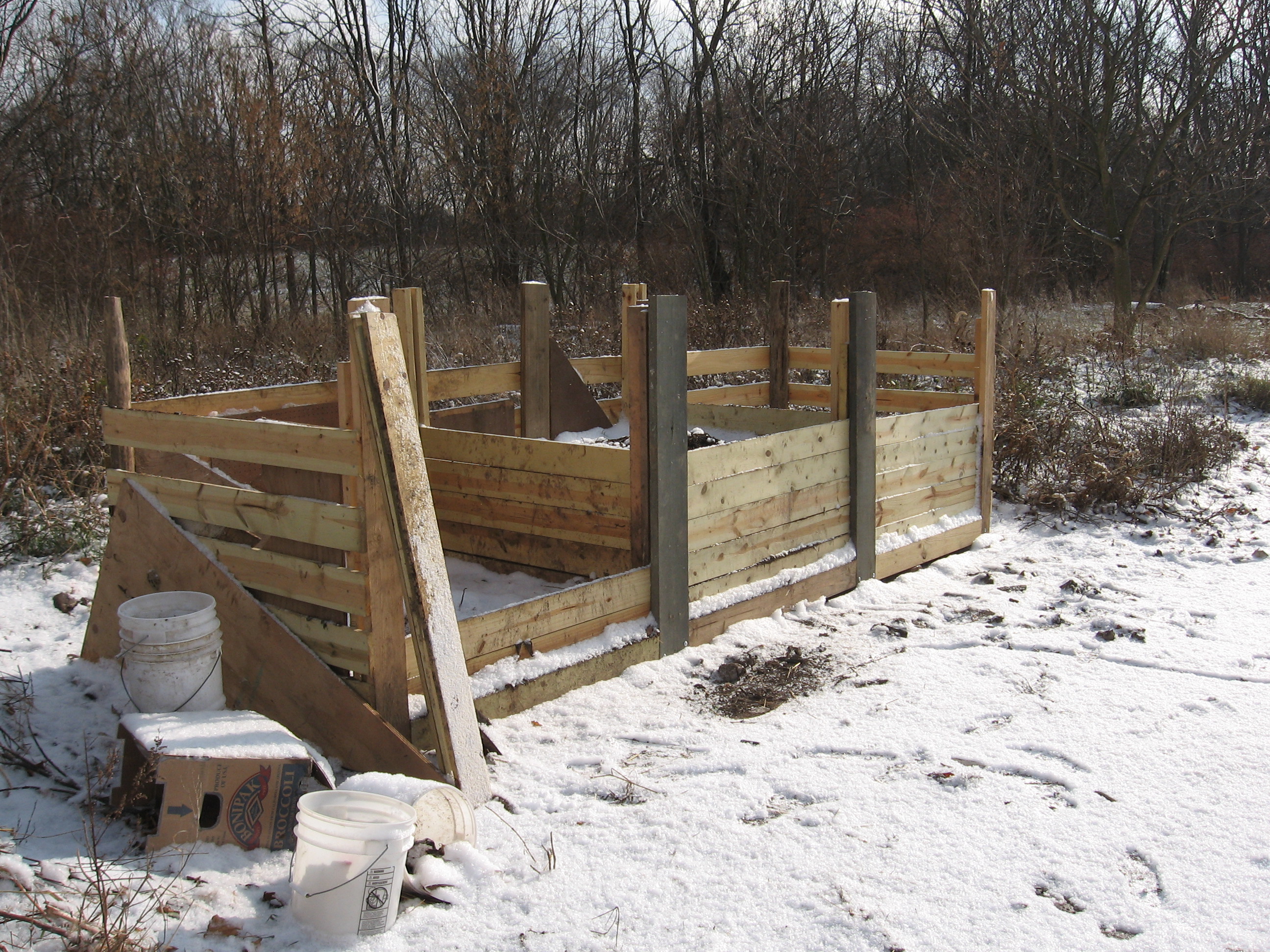Composting
Using the Compost Bins
The most important thing to know about making compost is that it is made by a community of living creatures. They are good friends, who make sweet compost for us and we provide them with an ideal environment. Getting to know them and what they do will greatly improve your understanding of how to make compost.
- a simple explanation:
OUR FRIENDS: Worms, Fungi, Bacteria, Insects, Etc.
WHAT THEY DO: Decompose all sorts of organic matter into rich, dark humus that easily delivers nutrients back into soil and plants.
WHAT THEY NEED: Oxygen, Moisture, Warmth, A good mix of nutrients.
WHAT WE DO 
-A compost system combines our need to dispose of organic waste and our desire for healthy fertilizer with the needs of our friends, the decomposers. Proper use of the 3-bin system works in a way that expedites the decomposition process by nurturing an environment that promotes high activity and reproduction of the decomposers.
-All of the needs above are limiting factors to the efficiency of a pile, meaning that to work most efficiently piles need to provide a good balance of all of their needs. We do this in a few intentional ways. First, the size of the pile has to be big enough so that it retains the heat that decomposers produce when they metabolize their food (best decomposition happens in a pile of 3x3x3 or bigger)
-The materials we put in have to contain the right nutrients, roughly in the right proportions (preferable 25:1 carbon to nitrogen ratio).
-The right mixture of materials also helps to hold moisture which improves through decomposition. -Turning a pile from one bin to the other not only allows for continuous composting of materials at different stages, it also aerates the soil, distributing needed oxygen evenly throughout the pile which speeds up the process.
-The three bin system is categorized as a “hot and fast†method. In the right conditions (summer time) it can complete the entire process in as little as 6 weeks.
First Bin
-Raw materials (-Food scraps, saga, chicken poopy hay, weeds, leaves etc.)
-A good balance is needed (not too much of one thing), these should be layered as you go. After a load from saga, put a thin layer of hay to create a rough balance of nutrients. Follow this with a thin layer of soil from the last bin which stimulates decomposition because it already contains a diversity of organisms.
-After two weeks of filling the bin, turn however much there is into the middle bin.
Middle Bin
-This is where the most decomposition happens because it has the most mass and it was recently aerated. It’s where the most heat should be produced.
-Compost should be kept here for 3 to 4 weeks, and since it is added to regularly from the first bin, you should judge the duration by the bottom, or first layer to be added. This means that some compost will only be in the middle bin for 1 or 2 weeks while some have 3 or 4. This isn’t a problem because the top, newer layer when turned into the last bin is put on the bottom, under the stuff that had been in the middle bin longest.
Last Bin
-almost finished/finished pile
-Compost stays in here for however long it takes for it finish full decomposition and be ready to be used.
-The signs of finished compost are soft, crumbly, sweet smelling, dark soil, that doesn’t have remnants of food or big clumps of other undecomposed materials. It does not have to be perfect for compost to work. Winter Use
-All of the compost from the middle bin should be added to the last bin for the winter. The large mass will create the most heat so that organisms will survive and continue working. The last bin should not be added to over the winter and can be covered with newspaper and hay to retain heat. By the early spring, before planting time, there should be a large finished product to go on the garden.
-Raw materials should be added to the first bin as usual and turned every 2 weeks into the middle bin over the winter.
Farm Day Method
About every other farm day, a few people should manage the bins. There’s a specific method that will not interrupt the different stages of decomposition. 1. Take any needed finished compost out of the last bin. 2. If the middle pile has sat for 3 or 4 weeks, turn it into the last bin. 3. Start a new pile or add to the growing pile in the middle bin from the first.
A Few Notes
-Wear boots, its squishy and you have to get in.
-It’s heavy, you can do it, put your back into it!
-It’s an art, take the time to care for the process. It’s beautiful and rewarding.
